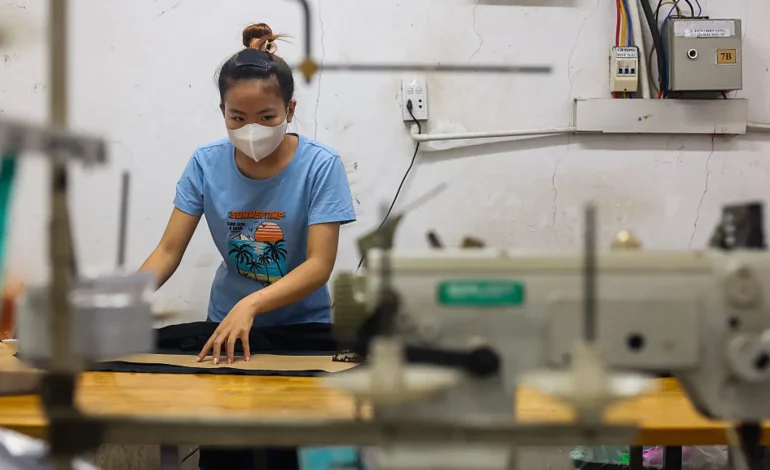US President Donald Trump’s newly announced trade agreement with Vietnam is drawing international attention, but a lack of specifics has left economists and policymakers uncertain about its broader implications — particularly regarding its effect on Chinese goods rerouted through Vietnam, CNBC reports.
The deal, unveiled Wednesday, introduces a 20% tariff on Vietnamese exports to the US and a steeper 40% tariff on goods that originate elsewhere but pass through Vietnam before entering the American market — a practice known as transshipping. The measure appears designed to curb the rerouting of Chinese goods to bypass existing US tariffs.
The announcement has sparked concern over enforcement. Experts say defining what qualifies as “Vietnamese-made” versus “transshipped” will be challenging for Hanoi.
“If it only applies to pure transshipments — goods sent from China to the US via Vietnamese ports without any local assembly — then there should hardly be any impact on Vietnam,” said Frederic Neumann, chief Asia economist at HSBC. “But if it applies more broadly to any Vietnamese goods with Chinese components, disruptions could be significant.”
China has become Vietnam’s top supplier of raw materials and parts for exports. As many Chinese manufacturers relocated operations to Vietnam during Trump’s first term, Vietnam’s trade surplus with the US ballooned — rising from under $40 billion in 2018 to a record $123.5 billion in 2024, according to US Census Bureau data.
Still, economists point out that implementing strict “rules of origin” requirements may be difficult, particularly in industries with complex supply chains. Dan Wang, China director at Eurasia Group, said that unless the thresholds for Chinese content are clarified, Vietnam may struggle to administer the new tariff framework effectively.
The agreement also raises questions about how other Southeast Asian nations may respond. Analysts suggest the pact could serve as a template for future US trade negotiations with regional economies. Countries heavily involved in transshipment or those with strong exposure to both Chinese and American markets may now reassess their positions. Lynn Song, ING’s chief China economist, noted that future agreements will depend on each country’s risk calculus regarding supply chains, exports, and bilateral relations.
Meanwhile, Beijing has expressed concern but has refrained from taking immediate retaliatory action. China’s Ministry of Commerce said Thursday it was reviewing the US-Vietnam agreement and warned against trade deals that could undermine Chinese interests. While experts anticipate that China may pressure other countries to avoid entering similar arrangements, immediate backlash is seen as unlikely.
“Flipping the table over a single Vietnam trade deal would be unwise,” said Song.
China and the US recently took steps to ease tensions, lifting a number of mutual trade restrictions following consensus reached in Geneva and reinforced in subsequent talks in London. The temporary trade truce, in effect until mid-August, has included the relaxation of curbs on US exports of ethane, chip design software, and jet engine parts, while China has agreed to expedite approvals for rare earth mineral exports.
Still, the Vietnam pact has broader implications. According to Nick Marro, principal economist at the Economist Intelligence Unit, it signals that Washington is unlikely to significantly lower tariffs on direct imports from China. Doing so, he said, would risk encouraging firms to shift production back to the mainland — contrary to the administration’s stated objective of reducing reliance on Chinese manufacturing.










The latest news in your social feeds
Subscribe to our social media platforms to stay tuned